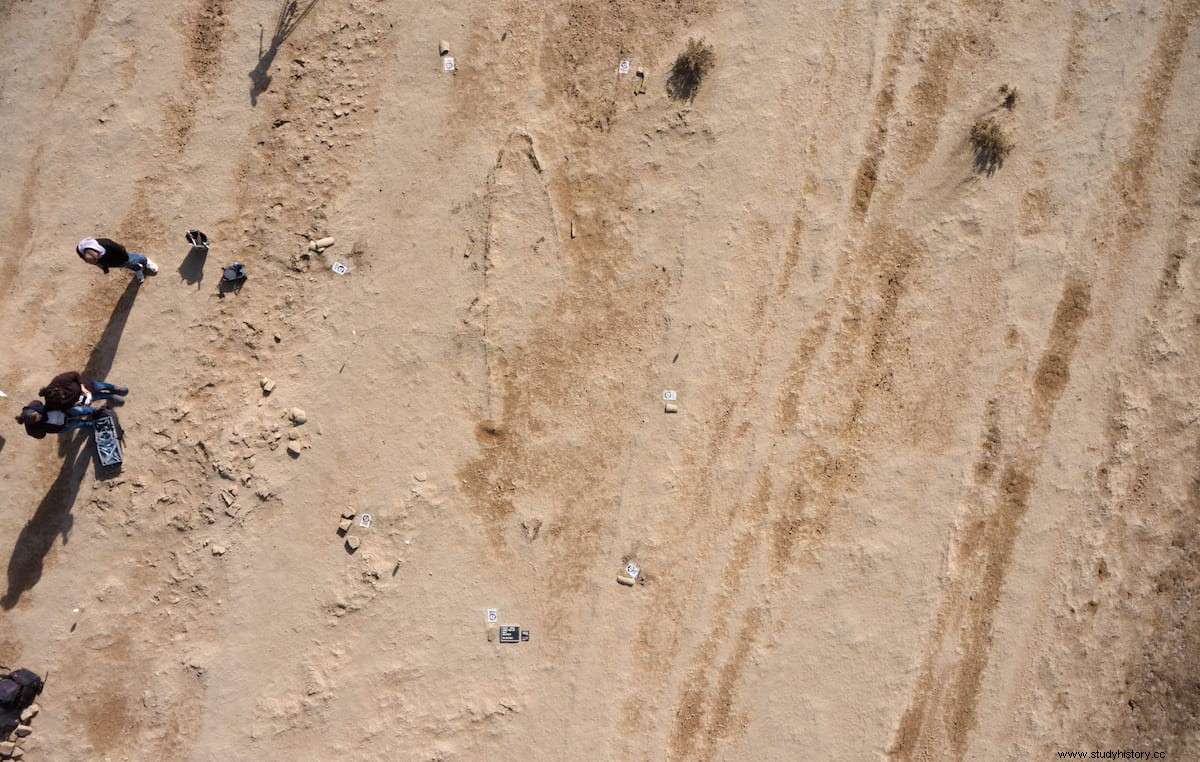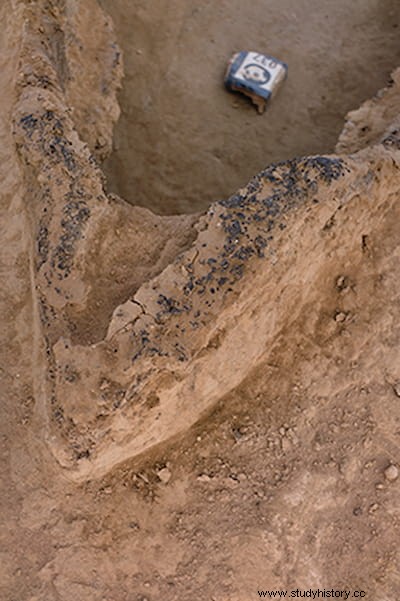During the spring 2022 campaign of the Iraqi-German Mission involving the Iraqi State Board of Antiquities and the Orient Department of the German Archaeological Institute, an ancient vessel of bitumen and organic material was excavated, which has not been preserved .
The find was digitally documented in three dimensions and fully recovered for later rescue and conservation. On March 23, 2022, it was handed over to the Iraq Museum in Baghdad.
Near Uruk, in the area of the archaeological site, there are ancient canals, fields and small settlements, as well as production sites that illustrate the rich life of the ancient city. The ship was found there during the systematic survey around Uruk-Warka in 2018 and photogrammetrically documented.

The fragile structure had already been partially exposed and affected by erosion in recent years. Therefore, the ship was last visible on the surface. The traffic that circulated near the place seriously threatened the conservation of the boat.
The Iraqi-German investigation team successively discovered the fragile vessel and thus documented the unique find:it is an almost completely preserved vessel, made of organic material (cane, palm leaves or wood) and completely coated with bitumen.
It is 7 meters long and up to 1.4 meters wide. In many places it is no more than 1 centimeter thick. The organic remains are no longer preserved and are only visible as traces in the bitumen.

During the excavation, the ship was documented in three dimensions using photogrammetry. The archaeological context shows that she sank on the bank of a river that has already sedimented, probably about 4,000 years ago, and that it was covered by sediment.
The vessel was covered with a shell of clay and plaster to directly stabilize it during excavation, so she was able to recover most of it. In accordance with Iraqi law on antiquities, she was transferred to the Iraq Museum in Baghdad for scientific study and conservation.
It is planned to exhibit the boat and make available to the public the knowledge about its construction and context.
